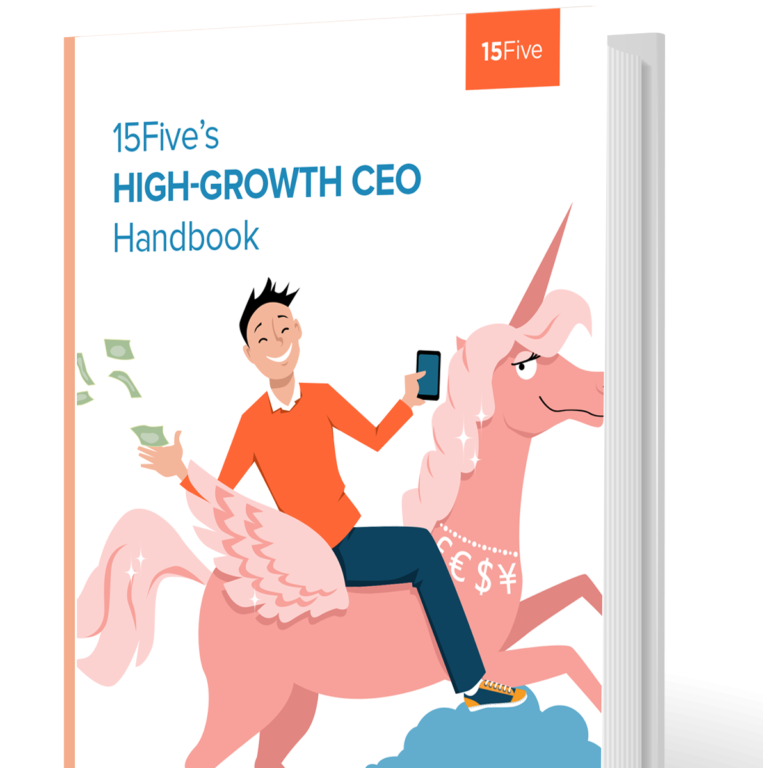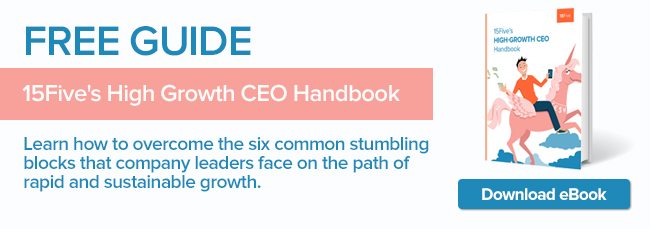High Growth: It’s Not Just For Unicorn Startups Anymore
Growth. Almost everything written about business falls under the umbrella of creating more of it. Growth is highly coveted by investors, founders, employees… really anyone who touches your company. And customers of B2B software products want to know that if they invest their time, efforts, and money integrating your offering, that your company is here to stay.
The Unicorn Startup Myth
For those in the tech sector, the growth focus remains on unicorn startups that grow rapidly and often inexplicably to valuations of more than $1 Billion. While there is talk that unicorns are becoming rare, we’ve seen an explosion of these finicky magical creatures. In 2009, there were four tech companies valued at $1 Billion or more. In 2015 there was nearly one emerging every week.
High growth does not necessarily mean repeatable or sustainable growth. There are ways to hack into short periods of growth with tactics rather than strategy, but two-thirds of the fastest growing companies ultimately fail. Remember the gaming company, Zynga? In 2009, they were Facebook’s #1 app developer. Their rapid growth was to blame for their eventual downfall, specifically two expensive tactical errors: paying $228 million for their San Francisco headquarters and $180 million for OMGPOP, the makers of Draw Something.
Furthermore, volatile markets have led many investors to seek companies that are on the path of steady and sustainable growth. Because while unicorns will happen, they cannot be made to happen by following a magical formula.
Is Growth Always a Good Thing?
According to Rand Fishkin, the founder of the successful marketing software company, Moz, “the biggest danger for subscription businesses is to start scaling up effort, money, people and time into marketing and growth before you have high enough retention and a low enough churn rate”. For example, his benchmark for a subscription business is globally under 5% churn monthly and less than 2% annual churn rate for the most loyal cohorts. “If you can do that, you can really pour on the growth. If not, then as you grow, you’ll burn through a huge percentage of your market.”
According to Rand, “investors will likely find it counterintuitive to hear a CEO say, ‘we need to stop growing and figure out our product-market fit, and then nail churn and retention before we start accelerating’. If you’re going to try and grow big and become IPO worthy, you almost certainly have to do it that way (unless you’re lucky or smart enough to somehow nail it right at the start).”
We’ve put together this handbook for founders and executives to learn the fundamentals of steady and sustainable growth – everything from hiring, contextualizing data, and maintaining a strong and healthy culture. You can glue a horn onto a horse and call it a unicorn, or you can plan wisely and build a solid foundation for success that you can ride all the way to the bank.
Step 1: Talent Acquisition
In 2012, a survey by CareerBuilder found that 66% of U.S. employers reported having bad hires costing upward of $50,000 each. Not only that, those bad hires negatively affected employee morale, decreased productivity and had a negative impact on client relations.
Rand had some insights here too. He believes that the wrong hire can make an entire team dramatically less productive:
You can hire one person who makes ten less effective, which is far more dangerous than not making that one hire. Instead, create super efficient processes, nail down the actual work that needs to get done instead of wasted busy work that won’t lead you down the right path.
Unless you are on an exceptionally small team, you should be outsourcing this task to a people and culture role (HR). Certainly the hiring manager must craft the job description along with input from the team, but if you’re spending your time talking to recruiters and evaluating resumes, your can’t focus on growing the company. In terms of the mechanics of hiring, here are some tips for getting it right the first time:
1) Build Your Network Authentically
When you go to events and meet people, you are not acquiring assets. You are creating trusting relationships with colleagues. So when you hire, you can spread the word and people will flock to you or perhaps suggest someone that they trust and believe in.
2) Screen for Passion/Culture Fit First.
Do candidates have the attitude of this is the most incredible company I can imagine working for and I wouldn’t want to work anyone else? Or are they thinking, you’re just one of three opportunities I’m looking at? If they have the passion, then it’s time to screen for values and culture fit.
Remember, skills can be taught, but values cannot be learned. Hiring new staff that are not in sync with values of existing team members may result in eventual financial losses due to the inevitable churn that comes from hiring people who don’t share your vision.
3) Design Your Hiring Standards
Institute hiring practices to attract superstars — with no settling for less. Create an organizational mandate to hire only A players and clearly define what that means. Then craft an interview process in layers, beginning with discovering the way that a candidate thinks, inquiring about past results and finally seeking the big picture of what he or she wants from a career.
4) Choose a Peer Council
The council should meet prospective hires for coffee (or a video meeting for remote candidates) and have each team member feel them out individually. After these staffers give their blessings, start the rigorous interviews. As with nearly any business decision, get the facts and then go with your gut. But if something is amiss or doesn’t feel right to the rest of the leadership team, this is a good enough reason to say no.
5) Hire People Smarter Than You
Hire by design beginning with your very first employee. Success-focused employees will always choose candidates who complement their skills and abilities. Hiring people who are smarter than you means that the work can be confidently delegated over time. Then focus on the important stuff — growing your business and hiring more A players.
 David Hassell is founder & CEO of 15Five, employee engagement and performance software that helps create high performing teams by combining feedback, pulse surveys, objectives (OKRs), and peer recognition all in one lightweight weekly check-in. Follow David on Twitter @dhassell.
David Hassell is founder & CEO of 15Five, employee engagement and performance software that helps create high performing teams by combining feedback, pulse surveys, objectives (OKRs), and peer recognition all in one lightweight weekly check-in. Follow David on Twitter @dhassell.





